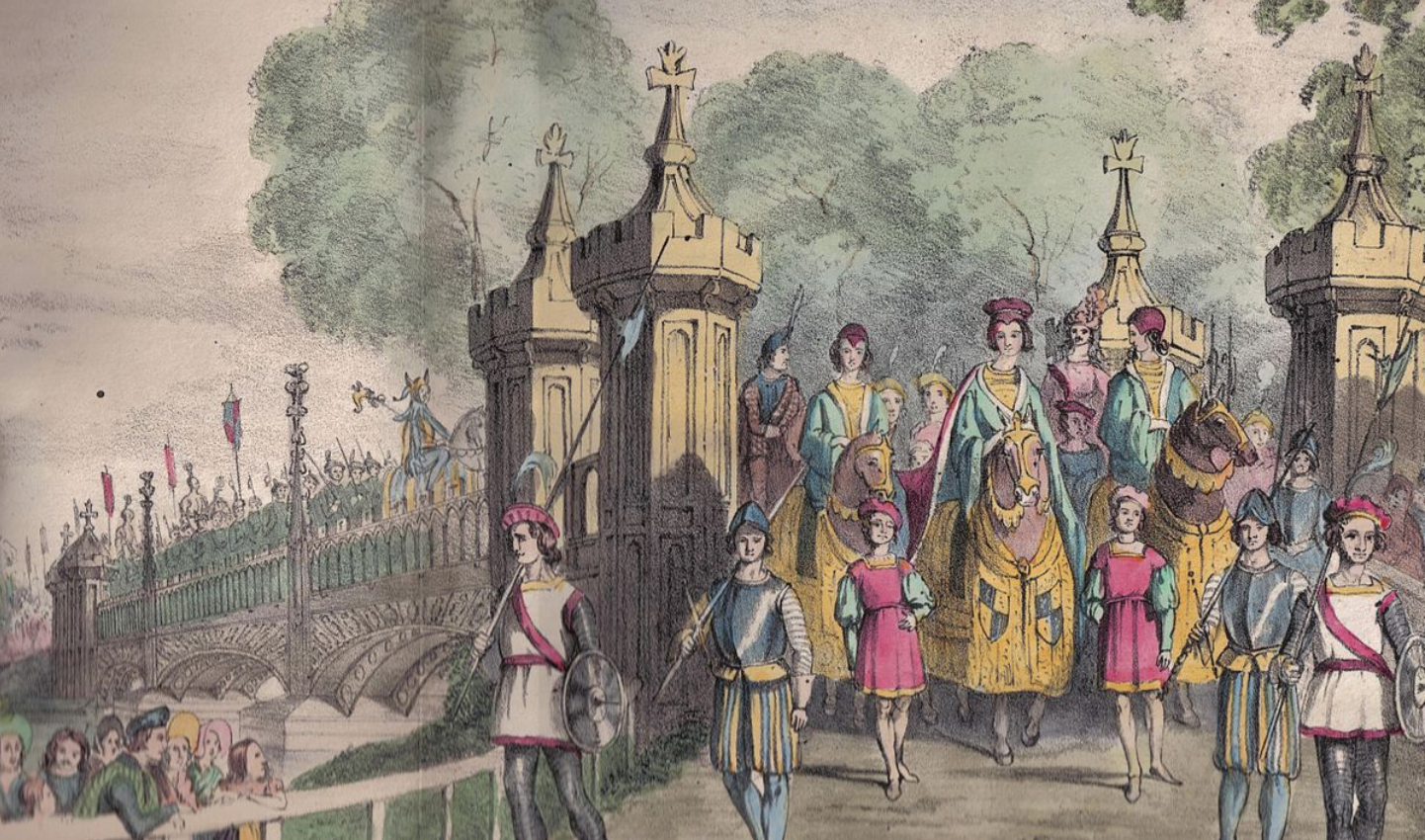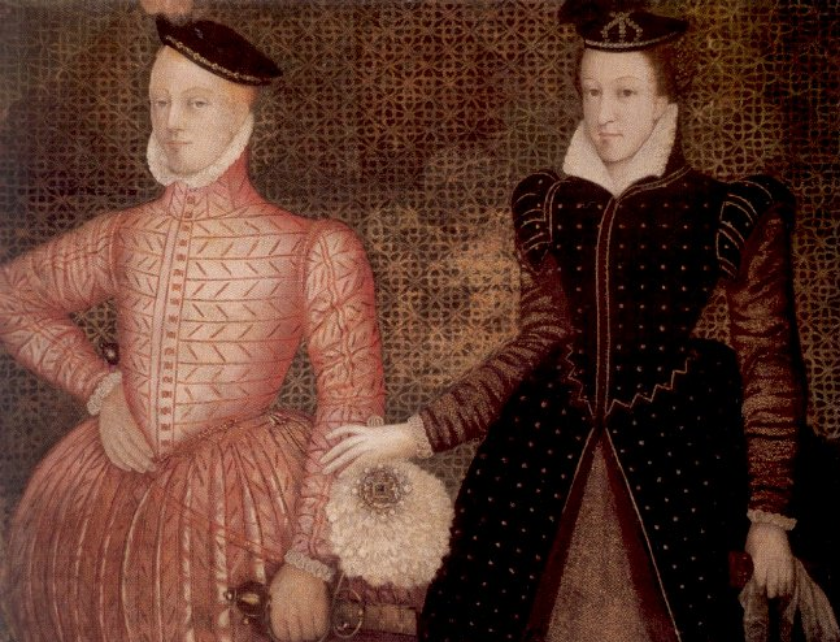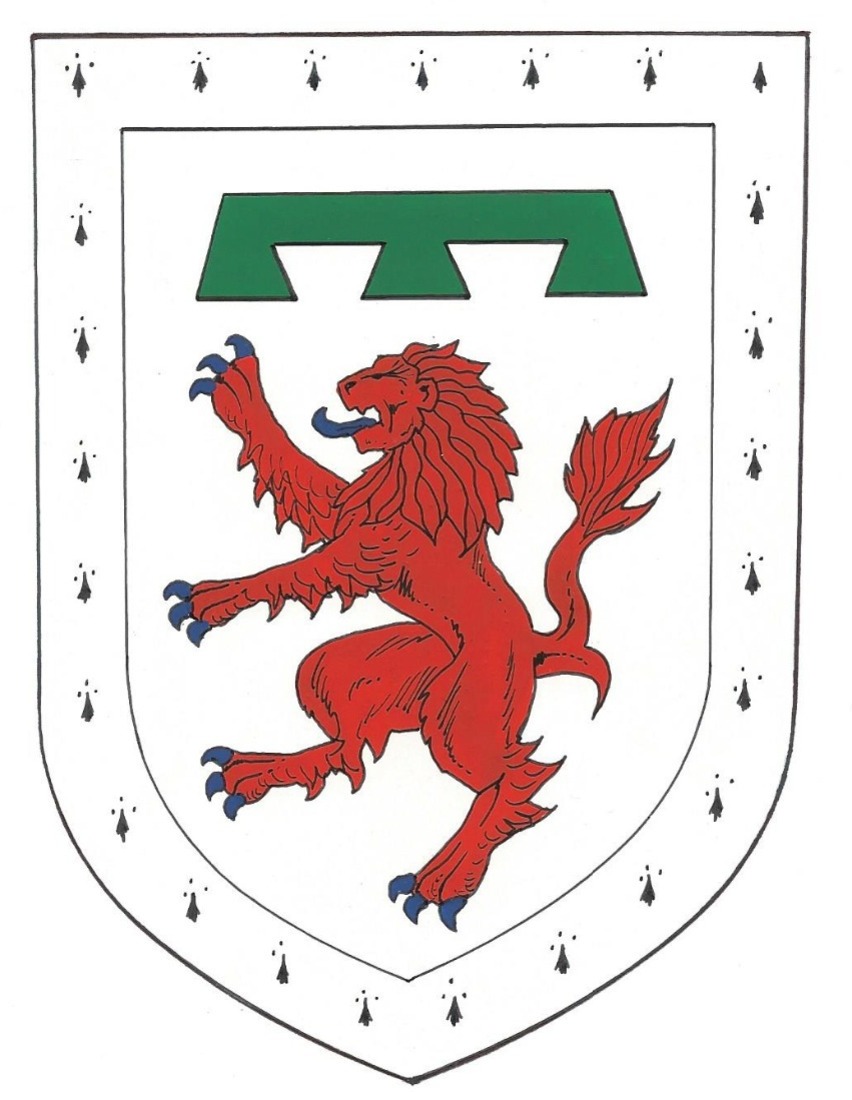Hugh Montgomerie of Eglinton
Sovereign Grand Commander 1556-1572


Born at Kilwinning Ayrshire in 1540 and succeeding to the title of 3rd Earl at the age of only six years upon the death of his father, Hugh Montgomery future Sovereign Grand Commander of the Ordre du Lys, was the son of Hugh Montgomery 2nd Earl of Eglinton and Mariota Seton and great grandson of Hugh Montgomery 1st Earl of Eglinton. Both Hugh the 3rd Earl and his brother William were educated at St. Mary’s College St. Andrews.
Marrying Lady Jean Hamilton, daughter of the Earl of Arran and Duke of Chatelherault in 1554 Hugh had his marriage dissolved by the Pope in May1562 on the grounds they were 4th cousins although at the same time and at the insistence of the Countess, Earl Eglinton was divorced from her by the Kirk on the grounds of his adultery. In August of the same year he married Agnes Margaret Drummond daughter of Sir John Drummond of Inchpeffray, her mother being Margaret Stewart daughter of James V. From this marriage he had four children, Hugh who became the 4th Earl of Eglinton, Robert of Giffen, Margaret who married Robert Seton 1st Earl of Winton and Agnes who married Robert Sempil,4th Lord Sempil*
Despite being a staunch Catholic, in October 1559, Hugh Montgomery supported his Protestant father -in-law and took his forces to Edinburgh to support Hamilton the Earl of Arran and the Scottish “Lords of the Congregation”, Protestant lords who were against Mary Queen of Scots marriage to the Dauphine of France. However, by the following February he was in favour of the Queen’s cause, even attending a convention at Dunbar which resulted in the signing of a bond of support on her behalf; he ultimately became one of Mary’s most constant supporters, especially in her efforts to establish the mass.
The 3rd Earl, who was a distant cousin of the two previous Sovereign Grand Commanders, accompanied Lord James Stewart, later to become Regent Moray, to France in 1561 to escort Mary Queen of Scots home after the death of her husband the French King. He was captured by the English on the return journey from France though later released.
At the marriage of Mary Queen of Scots to the 19 year old Henry Stewart, Lord Darnley** in July 1565, Eglinton was one of the nobles who waited on Darnley and in December 1566 was also one of the lords who assisted at the baptism of the young Prince James at Stirling according to the rites of the Roman Catholic Church. He was not personally involved in Darnley`s subsequent murder but certainly joined other Catholic lords in opposition to Mary’s proposed marriage with the Protestant James Hepburn, 4th Earl of Bothwell only a few months later and who was subsequently implicated in Darnley`s murder although later acquitted of the charge.
Despite much opposition, the marriage to Bothwell took place in May 1567 at Holyrood and according to Protestant rites. Within a few months both Mary and her new husband were captured by the Protestant lords at Carberry Hill just outside of Elphinstone Castle, near Edinburgh where Bothwell was allowed to go into exile in Denmark and where he died some ten years later.
Mary was incarcerated in the castle on Lochleven isle where under duress she signed her abdication documents as Queen of Scotland. Her son James by Lord Darnley was crowned King of Scotland at the Church of Holy Rude in Stirling in 1567 aged only thirteen months. This ceremony was particularly low key, poorly attended and the Reformation leader John Knox preached the sermon.
Upon Mary’s escape from Lochleven aided by George Douglas and Lord Seton, Hugh Montgomery joined Hamilton, the Earls of Argyll, Cassillis, Rothes and other supporters of the Queen fighting on her behalf to regain her throne at the battle of Langside which took place in May 1568, the site of which these days is on the outskirts of Glasgow. This came about when Mary’s force, marching from Hamilton and intent on taking her to the relative safety of Dumbarton Castle, had its progress blocked at Langside by troops commanded by the staunch Protestant Regent Moray***, who was not only Mary’s half brother but also Regent on behalf of his nephew, Mary`s son James VI whom he was raising. At this battle Mary`s army was routed with 300 or so of her troops being killed against a handful of Moray’s.
After spending the night of the battle at Dundrennan near Kirkcudbright Mary left Scotland for the last time riding across the Solway Firth to England, initially to Workington Hall, then to Carlisle Castle where she threw herself on the mercy of her cousin Queen Elizabeth I without success. Elizabeth had her confined to a number of castles and manor houses in England for the next eighteen and a half years before her eventual trial and execution.
Hugh Montgomery was captured after the Battle of Langside and subsequently declared guilty of treason for failing to turn his castles over to the victor and was imprisoned in Doune Castle, however he was not executed but remained in captivity until 1571 when he was released on the intercession of Regent Morton and was allowed to submit to King James VI. Upon release he tried to secure the safety and toleration of Catholics in the wake of the Reformation.
In September 1571 he was appointed to the Scottish Parliament in Stirling and became an important political figure of the time. In 1578 he was selected as one of the
Lords of the Articles, made a Privy Councillor and in 1579 Hugh became one of the commissions of lieutenancy appointed for the prosecution of the Hamilton’s for the murders of the Regents Moray and Lennox; he was also one of the assizes for the trial of, Regent Morton in 1581. For many years he also held the office of chamberlain and justicia of Kilwinning Abbey.
Dying in 1585 at Kilwinning, he was succeeded as 4th Earl of Eglinton by his eldest son also called Hugh Montgomery; however, this Hugh died in April 1586 at the age of 24 when he was shot by Cunningham of Clonbeith resulting in a feud between the two families. Retribution was gained by the Montgomery’s with the killing of Cunningham relatives, friends and supporters with the feud†† lasting until 1661 when William Cunningham the Lord High Chancellor married Margaret, daughter of Alexander the 6th Earl of Eglinton.
* Robert Sempil`s grandmother was Margaret Montgomery and his grandfather Robert 3rd Lord Sempil who is said to have murdered William Crichton 4th Lord Crichton of Sanquhar who although arrested and sent to Edinburgh escaped any punishment for the crime, initially a supporter of Mary Queen of Scots he later joined the association for the “defence of the young prince” after the murder of Darnley. At Carberry Hill he commanded the vanguard of the army opposing the Queen and was one of those who signed the document authorising the Queens imprisonment on Lochleven Castle. He also fought with Regent Moray against the Queen at Langside His son John by his second wife married Mary Livingston one of the Mary’s who were ladies in waiting to the Queen. John died young and so it was his son Robert who became the 4th Lord Sempil and in 1508 was excommunicated from the Church of Scotland. During the 1725 Rebellion Lord Sempil in conjunction with the 9th Earl of Eglinton and Lords Kilmarnock and Glasgow raised six thousand men at Irvine to assist the Government against the Pretender.
** Mary Queen of Scots and Lord Darnley were both great grandchildren of King Henry VII of England.

*** The Regent Moray was James Stewart 1st Earl of Moray, a member of the House of Stewart and an illegitimate son of King James V. His mother was the King’s favourite mistress Lady Margaret Erskine daughter of John Erskine 5th Lord Erskine and 16th Earl of Mar. He was assassinated at Linlithgow in January 1570 by a supporter of Mary. Taken for burial to St, Giles church in Edinburgh, John Knox preached at his funeral.
† The Regent Morton was James Douglas 4th Earl of Morton and the last of the four regents during the minority of James VI. He signed the Treaty of Berwick inviting the English army into Scotland to expel the Catholic reign of Mary of Guise. He was eventually executed by use of the maiden, a form of guillotine, for complicity in the murder of Lord Darnley.
†† The Montgomery –Cunningham feud had actually started sometime earlier in 1448 and lasted for 213 years. In 1488 the Cunningham’s set fire to the Eglinton`s original castle.

























